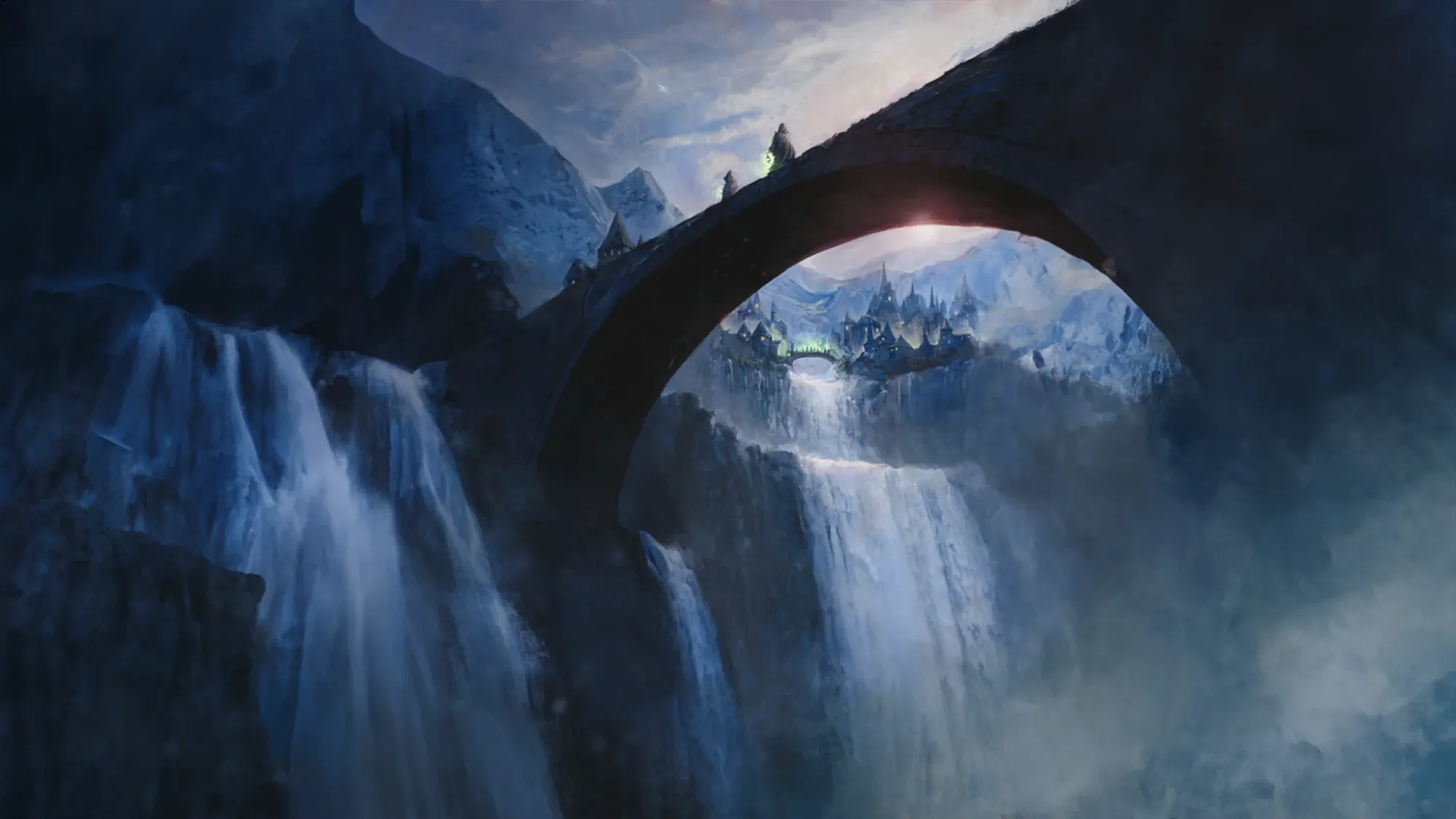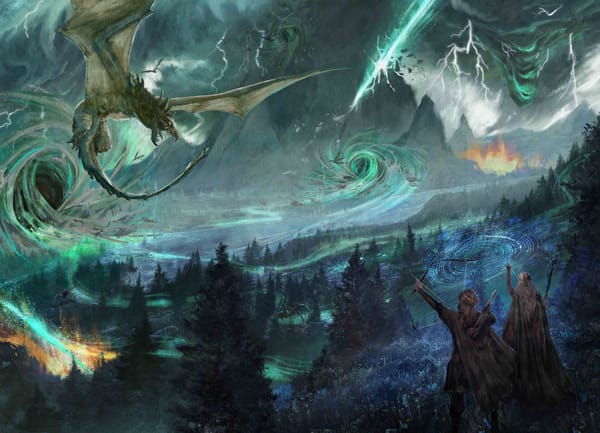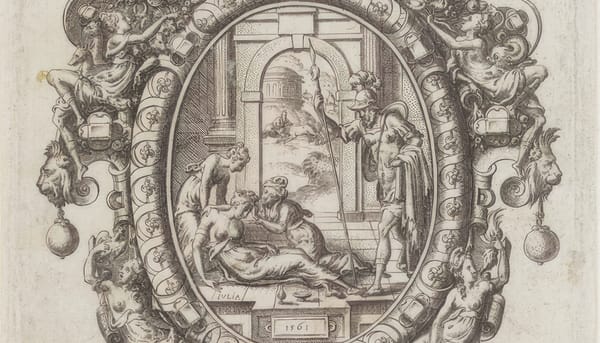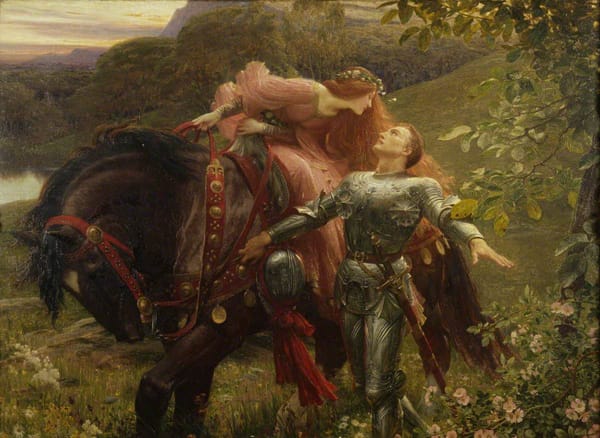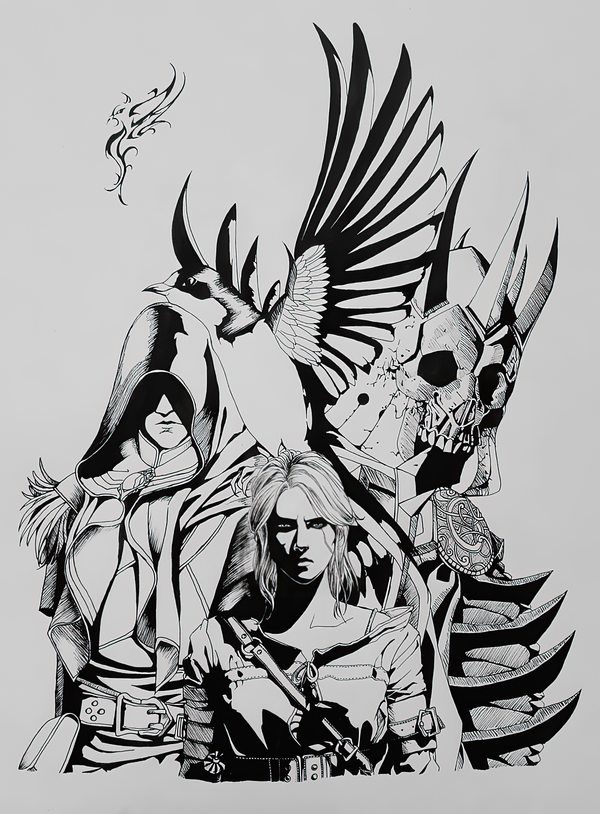The Witcher 3's Cut Content | Appendix C | Elven Lore
Why is there an elven Tower, Tor Gval'cha, on Skellige? What is Ragh nar Roog really? Why are the Aen Elle taller than the Aen Seidhe? The Witcher 3's cut content tells of Freyja the elf, Alderwalk, Leib-Olmai, the white ships, and even the cult of the Eternal Fire - created as a joke.
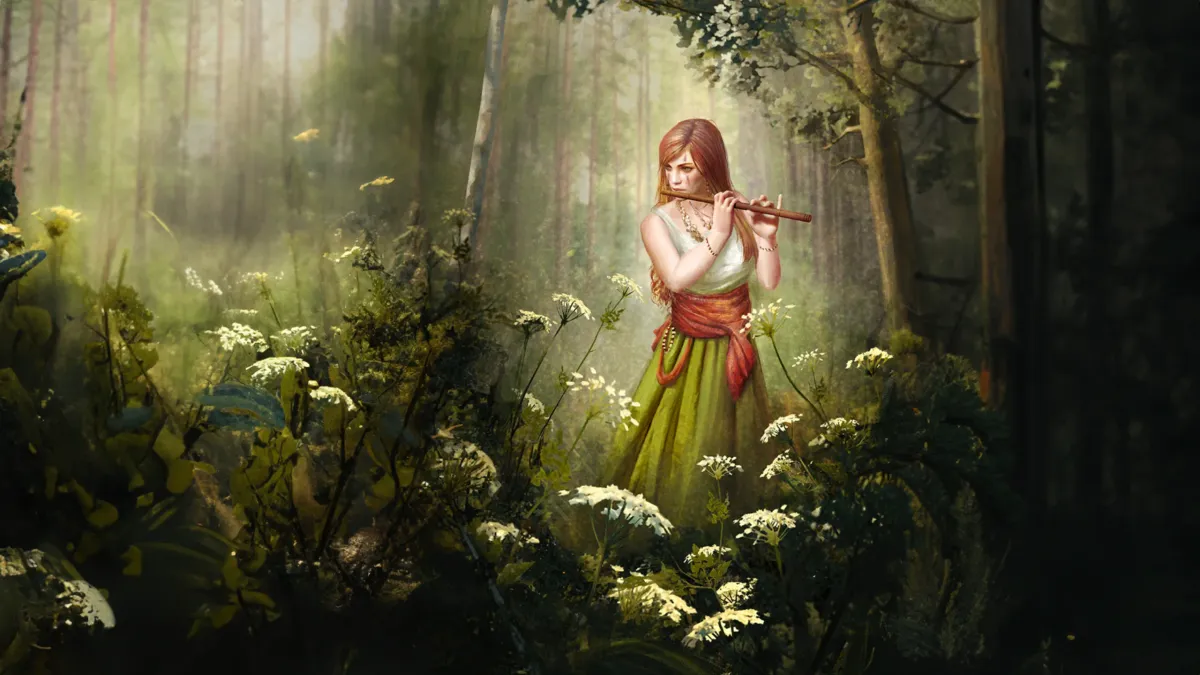
(458329-31): The time when the elves were united is long gone... Only traces of a glorious past remain... Cemeteries that humans could never dream of... Riches that they desire but will never obtain...
(539120): Holy shit, those elves are such scoundrels! Why are they so fierce?
Enjoy a loose collection of various bits of lore about elves that I found while working through The Witcher 3's cut content.
Origin & Migration
A book called The Great Migration contains a legend of the origins of the Aen Seidhe and the Aen Elle (note: it deviates from the books, and contradicts Ida).
Once we had another home. Once we were one people, the Aen Undod. But winter came, death, destruction. We had to leave. The road was long and hard. Many got lost, many lost their minds, many died.
We have come to a crossroads. One path led to a world full of greenery, the other to mountainous islands, which the dh'oine later called Skellige. There was no agreement on where to go, where we would be safer, farther from the White Frost. We split up. Those who settled among the mountains and rocks called themselves Aen Seidhe. Those who built a new home in the land of forests are known as Aen Elle.
We were one, now we are strangers. We look to each other in the stars. We speak to each other through the mouths of Aen Saevherne. We listen to the songs of the proud people of Aen Elle. We weep for the fate of Aen Seidhe, enslaved by the dh'oine. We remember the old days. We await the White Frost, another journey – or death.
- Ida Emean, a Sage of the Aen Seidhe, speaks of an event called The Alderwalk or Wandering of the Alders: 'When human expansion into this world became unbearable, some of my folk decided to find a better place to live. They opened the Gates of Worlds and moved to the Land of Alders. The one who led them was called Auberon Muircetach' (521298-521323).
- The dialect in which the Curse of Inversion was rendered originates in times before the separation of the Aen Elle from the Aen Seidhe. Ida notes that the dialect is 'from the time of Lara Dorren' (521298).
- A rare, elven scroll, called the Dar'Ah manuscript, might shed new light on a conflict between the Aen Elle elves and the Aen Seidhe (1096942). (This remains in the game.)
- In Malay, darah means 'blood'. Could the conflict have been about Elder Blood, or is it merely descriptive of kinslaying? Could it have taken place when the Aen Elle left the Continent, or before?
- When elves first came to the Continent, they fought its previous inhabitants (dwarves and gnomes). It is implied that dwarves hid in the mountains only after elven arrival (313917).
- An inscription under the fresco that depicts the White Ships reads: "Daedor aesien cailigh aen Ellylle, dim gvevr, dim ymlane, Dyls daed maeflu eira, defeatha oll anifael, oll plannu, Losture duvie al alvedu aen oll cyvan, eile oll cyvan, Ein taide ethola cyvan alva am aene asbae Aen Seidhe, Cante llonge agvae aep voruchel tor diven an taith afein, Dibe caen en caire, aeste paente im trisorta Caern Mur-dun” (344914-24).
- It designates a site on Skellige where the First Landing of elves took place; at the foot of the later-erected tower of Tor Gval’cha on Ard Hugtand (Undvik). The White Ships (Cante Llonge) are long gone and the portal between worlds stays inactive, but the Tower itself remains magically functional (320237).
- The fresco depicts White Ships moving 'in a spiral', searching for the light that is their target (529538).
- White Ships is Gwenyr Nai'ver in elvish (461467).
- Also: Cante Llonge. Different dialects, or different tries at naming?
- (One of the) Queen(s) of the White Ships was called Eilaena (464558).
- An ‘aurora ritual’ can reveal some of the history of the isles. To perform the ritual, you neen druidic knowledge and the power of Hern. In order to see a specific time in history, you must place an artifact from the times we are interested in inside the Magic Circle on the Hemdal rock (304389).
- Aelia’s Lens, a powerful relic left behind by the first elves, can show connections between worlds: light must be passed through it into the Brisingamen crystal (304746). Brisingamen is later stolen by Ciri and Avallac’h as they are about to enter Tor Gval’cha (323499).
Cultural & Religious Syncretism
Skellige Archipelago is steeped in elven history and cultural influence. It was the first place where the elves landed upon arriving in this world. ‘It is known that they arrived on the continent from Skellige on white ships’ (309483-85). ‘Skellige was their first port of call. From there, they set out on the White Ships to conquer the continent’ (313756).
- Places with the strongest associations to elves are Ard Hugtand (Undvik) where the first elves built Tor Gval'cha, and the Enidwen ruins on Ard Skellig.
- The earliest human inhabitants of the isles had contact with the elves and retained fragments of their beliefs, songs, and traditions. Manuscripts and chronicles found on Skellige contain many details about the beginnings of elven rule (309479). The archaic poetry of the Aen Seidhe is mostly passed on in the oral tradition, but humans who collect and retain it (e.g. Eyvind, the Skald) no longer understand the meaning of the songs and poems (345760). The practice is dwindling.
- Old tomes describe in detail the crown of elven kings, which happens to be identical to the one worn by King Bran before his death. The Crown of the Kings of Skellige originally belonged to elven rulers (320225).
- Additional manuscripts mention Auberon, the mythical elven king from the world of the Aen Elle, and Avallac’h, a powerful Seer who could travel between worlds (320241).
Freyja who is nowadays thought a goddess by Skelligeans, is probably an ancient elf; humans were not the first inhabitants of the islands (406331-41), so they derived their beliefs from elves and attributed godhood to certain non-humans. So it went with other deities elsewhere, and even with whole religions.
- ‘Legend says that centuries ago the goddess Freyjia lived on the island. She left behind a wonderful garden. The priestesses grew herbs there that were not found anywhere else, and their healing drakes were famous even in Novigrad’ (463783-85). In Freyja’s garden grows an elven tree, and the frescoes and stonemasonry found in Skellige depict historical events related to elven culture that, since the Aen Seidhe escaped to the Continent after the first humans' arrival, are now being conveyed as fairy tales to the islanders (406345).
- Geralt visits a temple of Leib-Olmai on Skellige, a temple honoring a bear god. Leib-Olmai is derived from Lieaibolmmai, meaning Alder man, the god of hunt in Sami (Finnic) mythology. He is the ruler of wild animals in the forests and lives inside alder trees.
- The religious cult of the Eternal Fire was first invented by Avallac’h as a joke (462872).
Skelligean legends (e.g. of Ragh nar Roog) are likely just elven historical records denoting the end times that came with the arrival of humans.
(406363): So the last one wasn't supposed to be about Ragh nar Roog...
(406365): Only the arrival of humans. They were the ones who drove Elenaril and her people away. These bas-reliefs were probably created at the end of the war... When the elves already knew they had to leave the islands.
(406367): So humans added legends to the elven sculptures...
(406369): I think so. They found this garden, the sculptures, discovered the power of the plants growing here... And they had to explain it all to themselves somehow.
Beliefs & Magic
- Elves believe in reincarnation. According to merit (394126).
- Long-lived but mortal, elves maintain a cult of eternal life (463748).
- Elven cemeteries were usually built after battles. Tombs where mummified bodies were buried are almost unheard of (463746).
- At Fox's Hollow in Toussaint, we can find a scroll that tells about elven burial customs: '...then the Eldest of the Aen Seidhe ends the speech in which he tells of the dead’s deeds. The body, covered in a shroud, is then placed on a pyre made of alder wood. Next, a further layer of wood is placed on top. When the pyre is finished, the mourners gather around and form a circle. The Eldest of the Aen Seidhe places a torch to the pyre, then five members of the dead’s family each do the same. The fire is fed throughout the night, until the first glimmers of dawn. The mourners then part and go to their homes, only to return... [illegible] Then the remains of the pyre are raked and bone fragments are sought out among the ashes. The Eldest places the bones in an urn previously filled with ash from the pyre. The urn is then sealed and placed in the family’s chamber in the burial grounds. Then the mourners go to...' (1207235). (This remains in the game.)
- Elves do not visit nor care for the graves of their loved ones and find humans’ obsession with death fascinating (1207171).
- Elves are fond of natural caves (543158).
- Frequently sites of elven necropoli (Sidhe or tumuli).
- The Aen Elle have great respect for dreamers and trust their visions (324173).
- Elven magic is capable of making barren land fertile and abundant, explaining why elves never thought much of farming.
- ‘Elenaril was supposed to have sailed to this world with the other elves on white ships, whatever they were. On the first night, they were attacked by some beast… A snake? Maybe, that’s not what the legend says. In any case, Elenaril defeated it. Then her magic made the barren land flow with honey and milk… Until our ancestors showed up’ (406357-61).
- The spell that put Ciri to sleep on the Isle of Mists removed her soul (554320).
- Effectively then, the magic firefly that guides Geralt to Ciri is her soul seeking its way to the Otherworld, to a liminal space like the Island of Apple Trees (Avalon) or the Isle of Mists.
- Note how both Avallac'h and the Hunt appear to possess magic that meddles with souls and lifeforce.
Biology & Behaviour
- Elven metabolism is different from humans’ (403696).
- The Aen Elle are generally taller than the Aen Seidhe; around 7 feet (347292).
- A semi-official theory (reported by SMiki) for why this is: during a meeting between fans and the REDs in 2016 at their HQ, before Blood and Wine released, one of their writers explained that one of the reasons the Aen Seidhe differ from the Aen Elle in height is due to a significant human admixture in the Seidhe. The apparent disappearance of post-Conjunction humans before the Nordling arrival could therefore be explained by elves making a breeding stock out of the Dauk and Wozgor people. Nordlings that arrived centuries later must have been more numerous as well as more receptive to magic, which would have made absorbing them into the elven gene pool impossible; in fact, the opposite happened.
This makes plenty of sense even in book canon alone. It is also possible though, that the Aen Elle and the Aen Seidhe are related tribes rather than one folk; the idea of Aen Undod is solely a game invention after all.
- A semi-official theory (reported by SMiki) for why this is: during a meeting between fans and the REDs in 2016 at their HQ, before Blood and Wine released, one of their writers explained that one of the reasons the Aen Seidhe differ from the Aen Elle in height is due to a significant human admixture in the Seidhe. The apparent disappearance of post-Conjunction humans before the Nordling arrival could therefore be explained by elves making a breeding stock out of the Dauk and Wozgor people. Nordlings that arrived centuries later must have been more numerous as well as more receptive to magic, which would have made absorbing them into the elven gene pool impossible; in fact, the opposite happened.
- Ves, kidnapped from her village by the Scoia’tael, was helped by one elf different from the rest. His name was Finwe. He would come at night and loosen her bonds, not ‘getting to her’ but instead pointing at stars, one by one, and telling her about them in the Elder Tongue. Aine Vel’Beanna was his favourite. Elves believe this star is Ettariel’s soul; a heroine of elven ballads (1001579-82)(1001619-23).
Miscellany
- Teleport keys – patterns along the outline of a portal door – depict stories or details from old elven folklore (423945).
- It brings to mind Gotland's Picture Stone.
- Only elves – a few – know how to make Black Mercury (1039327).
- Ancient elves built beautiful golems. They are rarely seen (559484).
- Nithral’s (Eredin’s adjutant’s) full name is Nithral Crainn aep Me'ilte (461037).
- {Daede sian caente, Aen Seidhe en’allane ael coeden...} [The day will come when the Hill People will emerge from the forests...] {Daede caente, en’blathannae gvedilie dinae den Dh’oine...} [The day will come when flowers will grow over the ruins of human cities...] {An Hen Dicen sainne en Anfare Morhen an Glaes Mynyde...} [And the Elder Speech will resound from the Great Sea to the Blue Mountains... ] (1053970-74).
Marginalia
My guess is they cut the White Ships because it would not have made sense for anyone to not suspect another such tower on Skellige when Tor Zireael exists.
Skelligean beliefs are shot through with elven influence. In the early drafts (172134), there is an exchange, where Lugos proclaims, ‘I will only listen to the king who kills the god and possesses the goddess,’ which echoes how A. Sapkowski characterises the ancient beliefs of various Indo-European peoples in The World of King Arthur. It evokes hieros gamos, the sacred marriage between the ruler and the land-goddess that validates sovereignty; this is especially manifest in Celtic traditions, e.g. Irish kings ritually ‘married’ sovereignty goddesses like Medb or Morrigan, and the possession was both sexual and territorial in connotation – claiming the goddess meant claiming the land she embodies.
The ritual killing of one’s predecessor, the old priest-king, also appears in Rex Nemorensis, and is more generally associated with cyclical thinking characteristic of cultures that live according to the changing seasons and epochs. From a Skelligean perspective, it also befits the Germanic/Norse ethos of earned kingship where rulers must prove worthy through acts that lesser men could not accomplish (e.g. the Völsung cycle); only heroes who commit god-defying acts and claim the favour of supernatural brides merit absolute loyalty. As Skelligean folklore is founded upon elven culture, and elven culture is heavily Irish- and Welsh-inspired, the puzzle falls into place ever better, particularly with the symbolism of Auberon’s demise and the ensuing Avallac’h-Eredin power struggle in mind – with Ciri in the middle.
Theorizing on the nature of, and inspirations for, the Spiral: the game seems to interpret it as a bridge between worlds (323986), though maybe the Gyre is more appropriate as a visual and conceptual metaphor; particularly since The Song of the Hunt in The Witcher 2 paraphrases Yeats’ ‘Second Coming’. It also calls to mind how creatures of Chaos use Zelazny’s Black Road, while going by the Witcher books it might be more akin to regular shadow-walking. Because nonetheless, the process of finding a way between places and times resembles the workings of The Temple of a Thousand Doors in Michael Ende’s The Neverending Story.
(1176485): Hmm... Let's stick to the analogy of the gate. No door is completely airtight. You can smell things through them, let's say. And when the wind blows, dry leaves fly over the threshold. A tangible trace of what's on the other side.
Portals to the Spiral, the way the game puts it, can be opened by special, gifted individuals (e.g. the Aen Saevherne or Wild Hunt navigators) when parallel realities arrange themselves in a particular way. Certain environmental requirements have to be met within any given reality at the time, however, for such paralleling to come about at all; requirements that have to do with the strength of the flow of Power (304925). For example, in Novigrad main square, the concentration of power, its uninterrupted flow, is practically inexhaustible, because so many mages have been burned there (346310). In most places, however, Power fluctuates. That’s probably why an interdimensional door, despite giving access to every possible time and space, opens, in effect, randomly (454637). Such passages have existed since the Conjunction of the Spheres (1021479), which might be leaving intact the books’ assertion that before the Conjunction, elves were able to travel freely between the worlds by other means from squeezing through occasional gaps.
We can probably assume, too, that to open Ard Gaeth (a special case of Gate of Worlds) is to open the Door at will (rather than have it swing open randomly, or everywhere all at once as during the Conjunction), and force it to connect to where and when one wills/imagines.
Dh'oine often say about extraordinary things that they are "out of this world." Most often, this is proof of their ignorance. But sometimes they are right.
– Francesca Findabair, elven sorceress, ruler of Dol Blathanna
The cut content interprets the elves’ pre-Conjunction ability to travel freely between worlds in connection to the elven towers (1078318). This though leaves unanswered how elves could have arrived in the world of the Aen Seidhe with no pre-existing towers. Hence, their freedom of movement was probably not solely dependent on the towers, which, to my mind, function more like anchored intersections of highways (but are very weird in the Witcher books).

